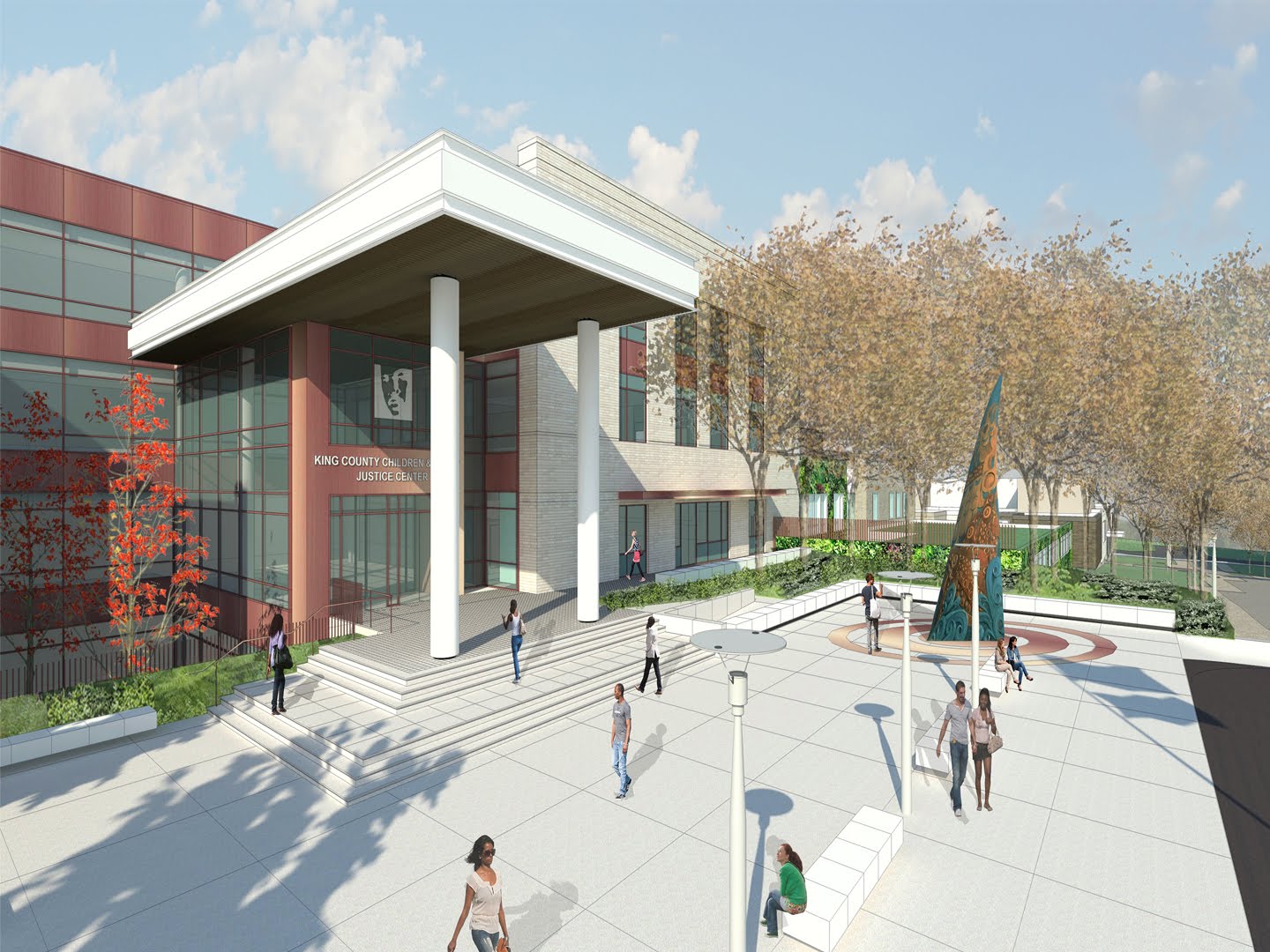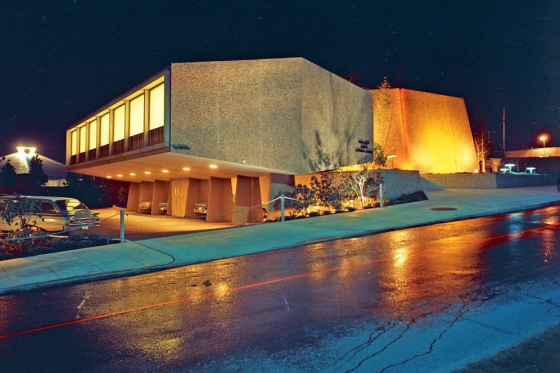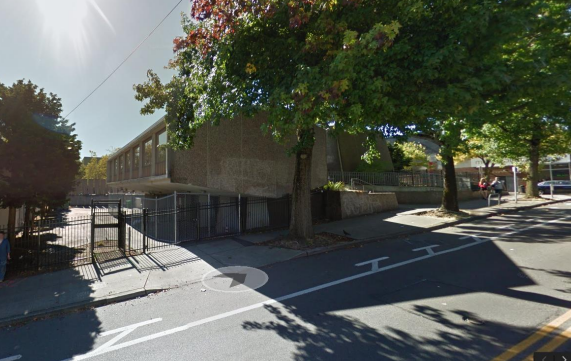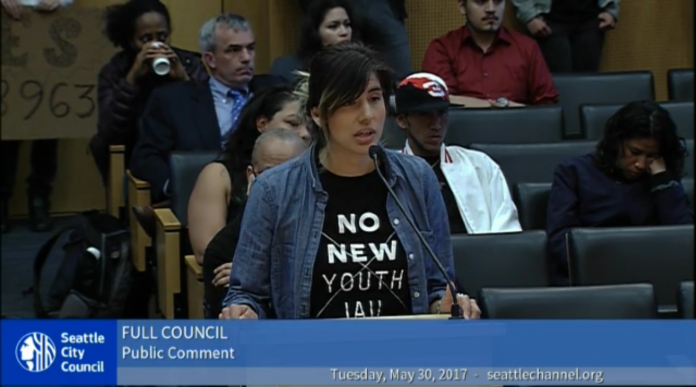The Seattle City Council responded to the concerted efforts of No New Youth Jail activists on Tuesday and passed a bill clearing up a procedural loophole and allowing opponents to appeal the new juvenile detention center’s land use permit. King County Executive Dow Constantine’s support for the $225 million project has been steadfast, even as others such as Councilmembers Mike O’Brien, Kshama Sawant, and Bruce Harrell have become vocal opponents, and Mayor Ed Murray has asked the County to reconsider. The City Council also designated a new landmark–a City-owned structure–in the Uptown neighborhood and reallocated federal low- and moderate-income housing funds set to expire soon if not used.
King County Juvenile Detention Center

King County is proposing a highly controversial project to redevelop and expand an existing juvenile detention center in the Central District. One of the main advocacy groups leading the charge against the project is Ending the Prison Industrial Complex (EPIC), which is deeply concerned about the systemic problems built into the law and justice system that leads to prejudicial incarceration of minorities (referred to as the “school-to-prison pipeline”).
Earlier this year, EPIC appealed the land use decision for the project to the City Hearing Examiner on the grounds that the project included a dimensional modification allowing reduced setbacks and additional building width not ordinarily permitted to other uses. Typically, such a decision may be appealed directly to the Hearing Examiner under the Land Use Code, but in March the Hearing Examiner dismissed the appeal on lack of authority to review the case.
The crux of the issue falls on a provision (SMC 23.51A.004.B.6) that allows an administrative (Type II land use decision) waiver or modification by the Seattle Department of Construction and Inspections (SDCI) for any structure width and setback development standards related to a “youth service center” in certain zones. The provision was specifically introduced to the Land Use Code for the King County juvenile detention center by Ordinance 124610 in October 2014:
6. Youth service centers existing as of January 1, 2013, in public facilities operated by King County in an LR3 zone within an Urban Center and replacement, additions or expansions to such King County public facilities. For youth service centers, the development standards for institutions in Section 23.45.570 apply, and subsections 23.45.570.D and 23.45.570.F relating to structure width and setbacks may be waived or modified by the Director as a Type II decision. The Director’s decision to waive or modify standards shall be based on a finding that the waiver or modification is needed to accommodate unique programming, public service delivery, or structural needs of the facility and that the following urban design objectives are met. The Director’s decision shall include conditions to mitigate all substantial impacts caused by such a waiver or modification.
While Ordinance 124610 clearly identified the modification, it did not provide for express authority for the Hearing Examiner to have jurisdiction in review of it under appeal. Specifically, SMC 23.76.006 did not include a corresponding provision to make that a legally binding option. In portraying legislation to resolve the issue, the City Council has asserted that the procedural loophole was a “legislative drafting error” of the ordinance that was not caught until the Hearing Examiner reviewed the case.
The City Council debated the merits of restoring a legal basis for appeal over the discretionary modification issued by SDCI. Two versions of the legislation were proposed: one that would be retroactive to the modification provision being adopted in 2014 (base legislation proposed by Councilmember Mike O’Brien) and one that would apply after 30 days after approval by the Mayor (an amendment by Councilmember Sally Bagshaw). Councilmember Bagshaw’s amendment did not succeed, but the base legislation passed.
It is not clear what, if any, effect that the retroactive ordinance will have if the Mayor signs it, in large part because a decision on the land use application has been made and is generally considered to have vested to the codes in effect at the time of application–despite this ordinance dealing only with a procedural issue as opposed to a land use regulation. Additionally, the appeal of the land use application to the Hearing Examiner has already been exhausted as an option and the appeal period has lapsed.
Following the dismissal of the case by the Hearing Examiner, EPIC appealed the project under the Land Use Petition Act, a due process relief valve that allows land use appeals to Superior Court, which is still in process. It is possible that the court could consider the ordinance provisions in its deliberations before making a final judgement. Some are hopeful that another bite at the apple is possible before the Hearing Examiner. In the coming weeks and months, it will become more clear on how this procedural could affect the outcome of the project, if at all.
New Uptown Landmark

A new landmark has been designated in Uptown. Known as the Seattle City Light Power Control Center (157 Roy Street), the building is considered to be built in the Modern Style. Seattle City Light commissioned the structure to provide had the structure built in 1963 to provide for local power operations. The building was originally designed by architects Harmon, Pray, and Detrich and later had addition in 1985 that modified the western wing of the structure. The structure is prominently located on Roy Street. The official landmark designation will give full protection to the site and building exterior.
The Seattle Landmarks Preservation Board describes the Seattle City Light Power Control Center as “a one-story steel reinforced concrete structure with two independent wings.” The structure is highly notable for how the structure is situated. The east wing flairs upward exposing six pedestals upon which the structure is held upright and providing parking underneath. “In 1963, the two wings were connected through a small rectangular passageway,” the SLBP wrote. “The original octagonal building was built of 24 four-ton four by twenty foot panels that lean inward and support the roof. A set of three panels forms each of the eight equal sides of the original octagon. Each of the sides is separated by an aluminum trough that serves as a recessed downspout.”
In fall 2015, a neighborhood advocacy group under the umbrella Uptown Alliance sought to get the structure nominated as a landmark in response to the City-initiated neighborhood planning update known as the Uptown Urban Design Framework. The Uptown Alliance wants the structure to form a portion of an “arts district zoning overlay” and has urged the City to consider requiring residential uses on the stretch of Roy Street upon which the Seattle City Light Control Center fronts.

The Seattle Landmarks Preservation Board identified four principle reasons for protecting the structure and its site:
1. It is associated in a significant way with a significant aspect of the cultural, political, or economic heritage of the community, City, state, or nation (SMC 25.12.350.C);
2. It embodies the distinctive visible characteristics of an architectural style, or period, or of a method of construction (SMC 25.12.350.D);
3. It is an outstanding work of a designer or builder (SMC 25.12.350.E); and
4. Because of its prominence of spatial location, contrasts of siting, age, or scale, it is an easily identifiable visual feature of its neighborhood or the City and contributes to the distinctive quality or identity of such neighborhood or the City (SMC 25.12.350.F).
The site is currently zoned Lowrise 3 (LR3), but could go to a higher intensity zone as part of the Uptown Mandatory Housing Affordability rezone process. Corresponding development regulations for Uptown could include the addition of Transfer of Developments Rights (TDRs). As a historic structure and site, the City-owned property could be eligible as a TDR sending site, meaning that Seattle City Light could sell development rights to other developers in the neighborhood who seek to gain extra development capacity, such as additional floor area.
HOME Fund Reallocation
The City Council approved an action to allow the Office of Housing (OH) to amend the use and allocation of $715,863 from the HOME Investment Partnership funds, provided by the United States Department of Housing and Urban Development. $495,848 comes from what OH terms “under-expended funds from prior years” and another $220,015 that was slated to assist first-time homebuyers with low- and moderate-incomes. The full set of funds will be reallocated to the Rental Housing Preservation and Development program, which seeks to set aside affordable rental units for households in need.
OH had a variety of reasons for pursuing the funding allocation changes. Firstly, HOME funds are time-limited in use with a five year maximum. Uncommitted funds under the program would be withdrawn after June 30th this year. Secondly, the median selling price for a home in Seattle right now is above $619,000, which is well above the $373,000 cap that HUD puts on HOME-assisted ownership housing. In sum, moving the funds now to a more immediate use would preserve them and make them useful to public in Seattle.
Stephen is a professional urban planner in Puget Sound with a passion for sustainable, livable, and diverse cities. He is especially interested in how policies, regulations, and programs can promote positive outcomes for communities. With stints in great cities like Bellingham and Cork, Stephen currently lives in Seattle. He primarily covers land use and transportation issues and has been with The Urbanist since 2014.


